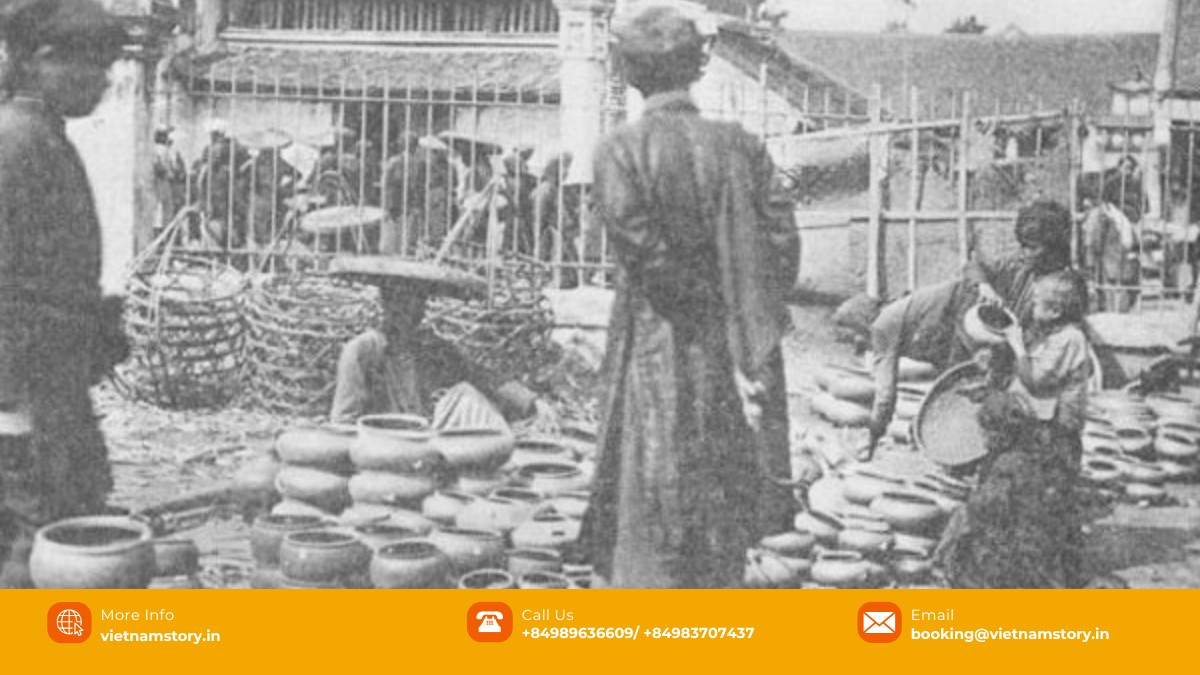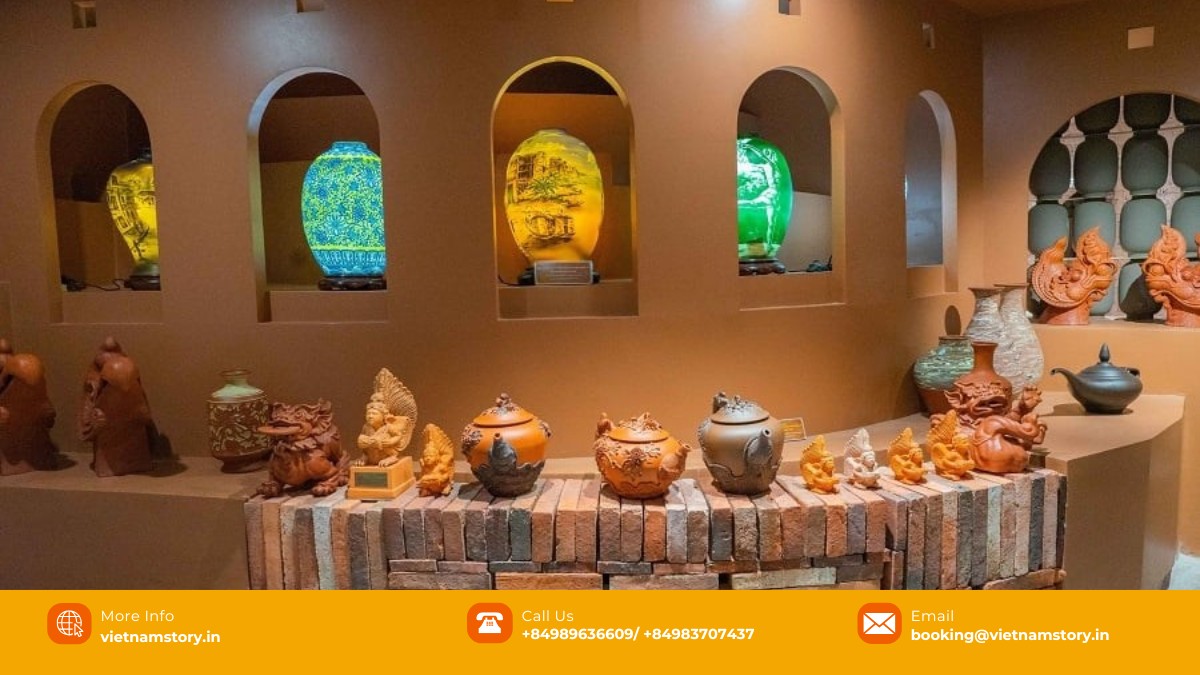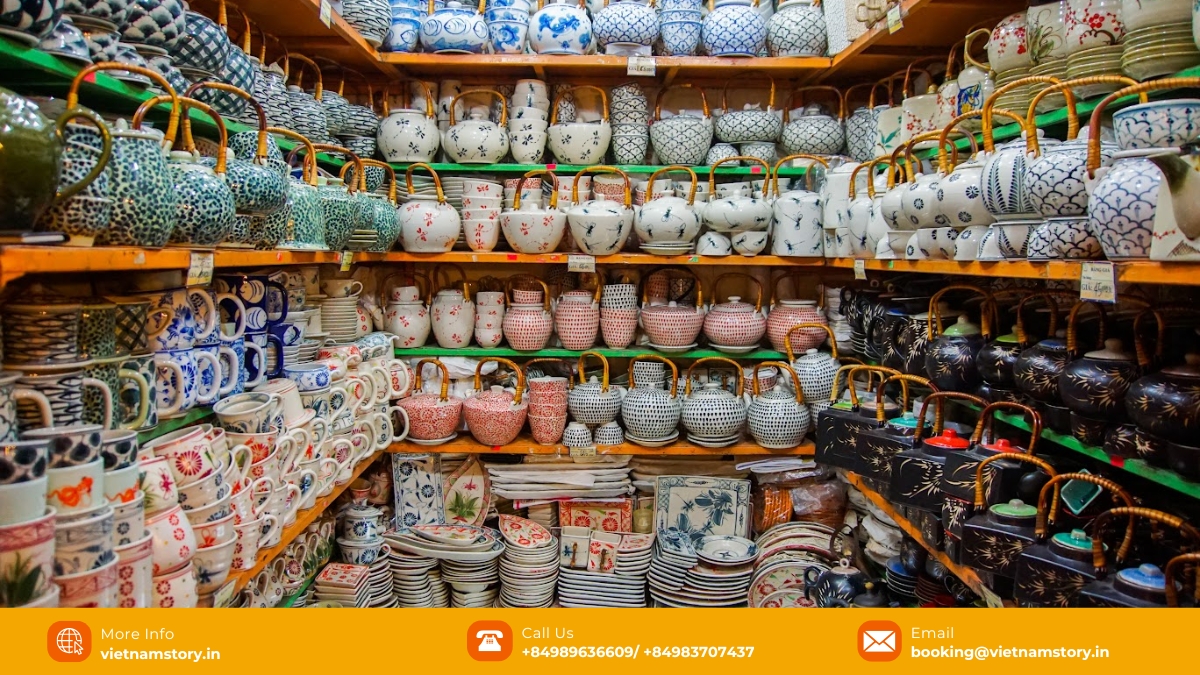Planning your trip to Hanoi and looking for a truly unique cultural experience? Want to see how beautiful Vietnamese ceramics are made, or perhaps even try your hand at shaping clay? Then you absolutely must add Bat Trang Pottery Village to your itinerary. This isn’t just any village; it’s Vietnam‘s most famous pottery village, a place where the art of making pottery and ceramics has thrived for centuries. It’s an easy and rewarding day trip from the bustling capital, offering a glimpse into a core part of Vietnamese heritage.
Bat Trang Pottery Village: Location and Getting There from Hanoi
More than just a collection of workshops, Bat Trang Pottery Village feels like a living art museum dedicated to Vietnamese ceramics. It holds deep cultural and spiritual value for the people of Vietnam. The village is renowned for producing high-quality, beautifully glazed pottery and ceramics that are popular both locally and internationally, showcasing the incredible skill inherent in this handicraft village near Hanoi
Getting to this renowned handicraft village near Hanoi is quite simple, making it a perfect addition to your exploration of northern Vietnam.
- Location: Bat Trang Pottery Village is located in the Gia Lam District of Hanoi, situated conveniently on the bank of the Red River.
- Distance: It’s just about 13-15 kilometers southeast of Hanoi city center.
Here are your options for reaching Bat Trang:
- By Bus: The most budget-friendly way. Take bus 47A from Long Bien Transit Point in Hanoi directly to the village. The journey is about 30-40 minutes.
- By Motorbike/Private Car: Takes around 20-30 minutes from the city center. Following the road along the Red River bank is a popular route. Follow the road along the Red River bank after crossing the historic Long Bien Bridge or Chuong Duong Bridge. If you’re interested in iconic Hanoi landmarks with a rich past, learning about the Long Bien Bridge is highly recommended.
- By Taxi/Ride-Sharing: Readily available from Hanoi.
- As part of a Tour: Many Bat Trang Pottery village tour packages include transportation, simplifying logistics.
- By Riverboat: For a scenic approach, some Red River tours incorporate a stop at Bat Trang.

Bat Trang Pottery Village – An appealing attraction for culture tours in Hanoi
The Enduring History of Bat Trang Pottery Village
One of the most fascinating aspects of Bat Trang Pottery Village is its deep and rich history. This village has a long history, believed by many to date back to the 11th or 12th century, though documented accounts firmly place its establishment by the 14th or 15th century. This gives it a remarkable continuity of production for over 500 years, a truly unique characteristic and a testament to its resilience and the skill of its artisans.
While the exact founding date has a couple of stories, historical documents suggest its establishment by the 14th or 15th century, though many villagers believe it started even earlier. Its location near deposits of good white clay along the Red River attracted potters centuries ago, leading to its growth into a major ceramic production center. The village even held the significant historical status as a supplier to the royal court at one point, highlighting the high regard for its ceramics. Despite periods of challenge, Bat Trang adapted, transitioning from traditional cooperatives to modern businesses, while thankfully preserving the core traditional ceramic art. Its cultural importance is recognized nationally in Vietnam.

While embracing modern technology for efficiency, the heart of Bat Trang still lies in its traditional methods, passed down through generations of Vietnamese artisans. This blend of old and new ensures the survival of the craft while meeting contemporary demands. The village’s importance to Vietnamese heritage is officially recognized, holding the title of a national intangible cultural heritage.
Things to See and Explore in Bat Trang Pottery Village
Once you arrive in this famous pottery village Hanoi, there’s plenty to explore:
- The Ancient Village Alleys: Walk through the narrow lanes, noticing the traditional architecture and old firing kilns built into the surroundings. A buffalo cart ride offers a charming, albeit touristy, way to see the older parts.
- The Pottery Market: This is a highlight for many Indian travelers! The sprawling Bat Trang ceramic market is filled with an astonishing variety of pottery and ceramics. You’ll find everything from affordable household items and souvenirs to intricate decorative pieces for your Hanoi tour. This is where you can practice your bargaining skills!
- The Pottery Workshop Experience: Don’t miss the chance to sit at a pottery wheel and make your own creation! Many workshops offer guided sessions where you can shape a cup, bowl, or vase. It’s a fun, memorable activity suitable for all ages and offers the unique characteristic of allowing visitors to make their own pottery.
- Bat Trang Pottery Museum: Known officially as the Essence Center of the Vietnamese Craft Village, this museum is housed in a striking building. It showcases the history of the village, displays beautiful ceramics, and provides context for the craft. Its modern, spiral design is inspired by the very tool at the heart of the village – the pottery wheel.
- Ancient Kilns: While modern methods are used for production today, exploring the preserved ancient kilns like the “Lo Bau” offers insight into the scale and techniques of past firing.
- Bat Trang Village Temple: A peaceful stop by the Red River, this temple is important for the local community and a place for traditional ceremonies.
- Sample Local Food: Look for stalls selling local snacks like Banh san nuong and try the unique canh mang muc, a soup featuring bamboo shoots and squid, often served in local pottery.

While exploring Bat Trang offers a deep dive into the world of Vietnamese ceramics and pottery, the region around Hanoi is a hub for various traditional crafts. If you’re fascinated by these unique cultural practices and want to see another visually striking craft village, consider adding a visit to Quang Phu Cau Incense Village to your itinerary, famous for its vibrant and beautiful incense production.
Top Things to Do and Experiences You Can’t Miss
This is where Bat Trang Pottery Village really comes alive for visitors!
- Experience a Pottery Workshop: This is often the highlight! You can sit at a pottery wheel, get your hands on the clay, and with the guidance of local artisans, shape your own piece of pottery. It’s incredibly affordable and a lot of fun, especially if you’re travelling with family. You can usually pay a small extra fee to have your creation fired and sent to your hotel or picked up later.
- Shop Directly from Artisans: Wander the market and smaller shops. Talk to the local artisans. Bargaining is common here, similar to markets in India, so feel free to negotiate prices, especially if buying multiple items.
- Taste Local Delicacies: Fuel up with some local food. Don’t miss Banh san nuong (grilled cassava cake) or the unique canh mang muc (bamboo shoot and squid soup), said to be a Bat Trang specialty!
- Observe the Craft: Watch skilled Vietnamese artisans demonstrate the different stages of ceramic production. It’s fascinating to see the precision and artistry involved.
The Craft Defined: The Ceramic Production Process in Bat Trang
The creation of Bat Trang ceramics is a skilled art form involving several crucial steps. At its foundation is the selection of raw clay. The region is blessed with deposits of fine, white clay, and the specific specific local clay properties contribute significantly to the quality and character of the finished products.
After preparing and refining the clay, artisans shape the pieces, often using the rhythmic pottery wheel. Hand-building techniques and molds are also employed depending on the item’s complexity.

Once dried, the ceramics are decorated and glazed. Hand-painting intricate designs, often in the famous blue and white ceramics style, is a hallmark. The glazes themselves are key, and Bat Trang is known for its high-quality glaze in a variety of colours and finishes.
The final, transformative step is firing in the kiln. Traditionally wood-fired, modern gas or electric kilns allow for precise temperature control (reaching up to 1300°C), ensuring the clay hardens and the glaze develops its final appearance and durability.
As a place that truly produces pottery/ceramics, Bat Trang offers an incredible range of items:
- Utilitarian Wares: Everyday bowls, plates, cups, teapots, and vases.
- Cult Wares: Items for altars and religious purposes, often highly valued.
- Decorative Objects: Sculptures, figurines, wall art, and architectural pieces, showcasing the artistic aspect of the craft.
Look for the quality of the glaze and the detail in the decoration. From classic designs to modern interpretations, you’ll find a piece of Bat Trang pottery that speaks to you.

Tips for Your Visit to Bat Trang Pottery Village
To make your trip to Bat Trang Pottery Village smooth and enjoyable:
- Best Time: Any time is fine, but visiting in the dry season (October to April) is comfortable. Arriving early in the morning (around 7-8 AM) lets you see artisans starting their day.
- Pottery workshop Bat Trang price: Very reasonable, typically ranging from VND 20,000 to 150,000 (approx. ₹60 – ₹450) for a basic session. Firing costs extra if you want to take your piece home.
- Museum entrance is a small fee (around VND 30,000 / ₹90).
- Shopping costs vary greatly – small items from VND 20,000 (₹60).
- Shopping: Be prepared to bargain, especially in the market. Compare prices and check items carefully.
- Movement: Be cautious when walking in workshops and the market as items are fragile!
- Payment: Carry sufficient Vietnamese Dong cash for purchases, workshops, and food.
- Language: While some English is spoken in tourist areas, basic Vietnamese phrases are appreciated.
Conclusion: Add Bat Trang Pottery Village to Your Vietnam Story
For Indian travelers exploring Vietnam, Bat Trang Pottery Village offers a fascinating and engaging cultural experience. It’s a chance to connect with a centuries-old craft, witness the skill of Vietnamese artisans, get creative yourself at a pottery workshop, and pick up beautiful, authentic Bat Trang ceramics directly from the source. Easily accessible from Hanoi, this traditional craft village Vietnam promises a memorable and rewarding visit, adding a unique layer to your Vietnam story. Plan your visit to this incredible pottery village today!

